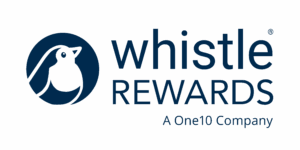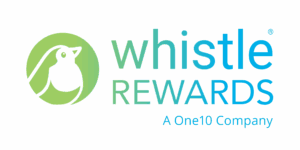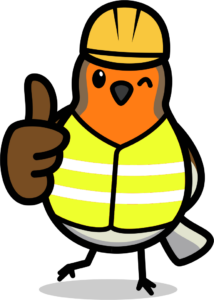AI in Safety: Predicting and Preventing Hazards Before They Happen
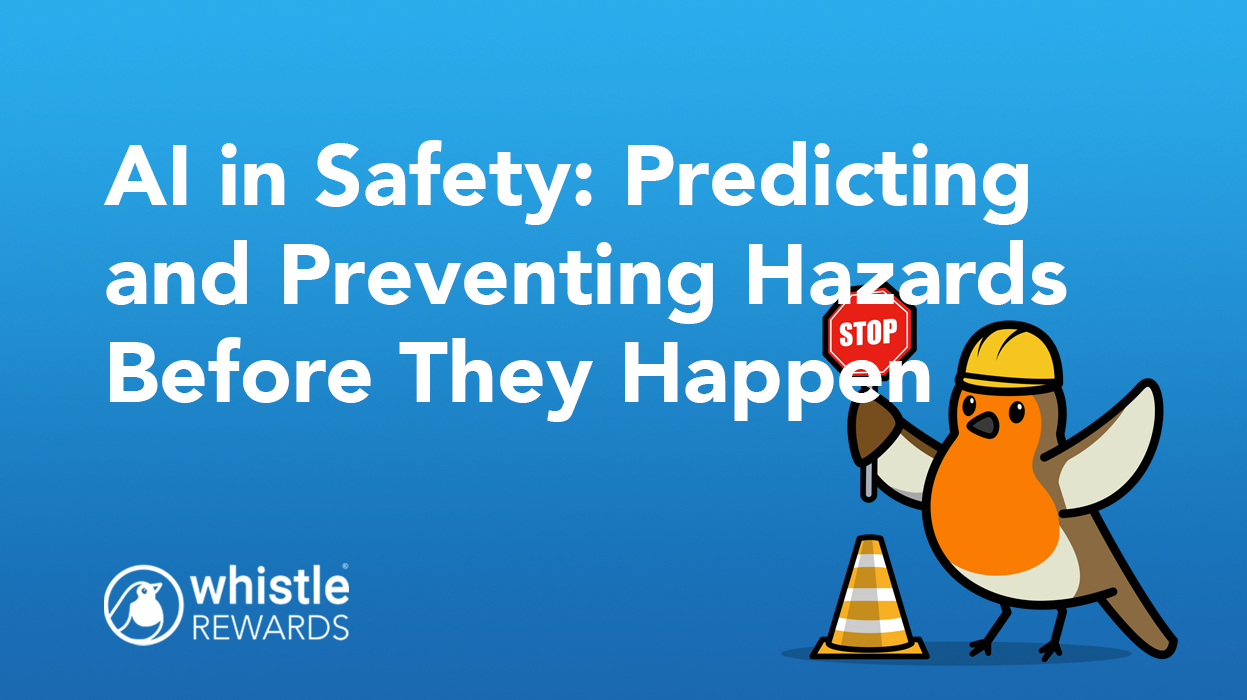
Introduction: Why the Industry Needs a Shift
In industries like construction, manufacturing, and logistics, safety has always been a top priority, but the approach to safety hasn’t changed much in decades. Most programs are reactive by design: something goes wrong, teams investigate, and adjustments are made. But what if you didn’t have to wait for an incident to improve safety?
Today’s jobsites generate a mountain of data. The challenge is not just about gathering data—it’s about making sense of it. This is where artificial intelligence is rewriting the rulebook. By identifying subtle patterns across dozens, hundreds, or thousands of variables, AI is helping companies spot risk factors before they lead to injuries. In fact, AI-powered predictive analytics have been shown to reduce serious workplace injuries by up to 40%. The outcome is a shift from reactive protocols to proactive prevention and the results are changing the game.
The Limits of Reactive Safety Programs
Even the most diligent safety programs often fall short because they rely on historical data. Incident reports, audits, and observations can highlight trends but by the time a pattern emerges, it’s already too late.
Here are some of the common challenges reactive safety programs face:
- Lag time between incidents and corrective action.
- Blind spots in reporting since not all hazards are noticed or documented.
- Overload of data without clear next steps or meaningful insights.
- Low engagement from frontline workers who don’t see immediate results.
The traditional approach assumes that safety improvements can only follow accidents. AI challenges that assumption.
How AI Enables Predictive Safety
AI is great for identifying patterns that humans can’t easily detect. By analyzing both structured and unstructured data from wearables, equipment sensors, inspection reports, environmental conditions, and even behavioral signals, AI models can uncover early indicators of elevated risk.
Here are just a few examples of what predictive safety powered by AI can deliver:
- Fatigue detection based on biometric data, shift patterns, and environmental stressors.
- Proactive equipment alerts when usage patterns suggest wear-and-tear or a pending failure.
- High-risk task identification using site-specific data and cross-project trends.
- Dynamic heat maps that visualize where incidents are most likely to occur across a site.
This isn’t theoretical. In fact, a report from Construction Dive found that companies using AI-driven safety tools have seen a reduction in workplace accidents by as much as 25%, resulting in fewer injuries and lower insurance costs. Forward-thinking companies are already leveraging AI to flag leading indicators of incidents before they happen—enabling safer decisions in real time.
What Makes This Shift So Powerful
The power of predictive safety isn’t just about identifying risk. It’s about enabling better decisions, faster.
- Fewer injuries: When hazards are flagged early, crews can respond before they escalate.
- Higher productivity: Less downtime from incidents means more time spent building.
- Smarter training: AI can identify trends and gaps in behavior, allowing for targeted micro-learning.
- Better morale: Workers trust safety systems that feel proactive, not punitive.
Ultimately, safety rewards and recognition tools that are coupled with AI help companies make safety compliance a part of the workflow—not an afterthought.
From Insight to Action: How Whistle Makes It Work
At Whistle, we understand that AI is only as powerful as the action it inspires. That’s why we launched Robin, our new AI tool that enhances the way your team can give and receive recognition. Many platforms surface interesting data but fail to change day-to-day behavior. That’s why we take a people-first approach to predictive safety.
With Whistle, safety leaders can:
- Deliver real-time safety nudges to crews based on AI-generated insights.
- Push bite-sized learning modules when individual or team-level risks are flagged.
- Surface manager alerts when leading indicators trend in the wrong direction.
- Seamlessly tie safety actions to broader goals like performance, culture, and retention.
Whether your data comes from wearables, site sensors, manual inputs, or a mix of all three, Whistle acts as the last mile, turning predictive analytics into positive behavioral change.
The Future Is Proactive (and It’s Already Here)
We’ve reached a turning point. The industry no longer needs to accept safety risks as inevitable. With predictive safety powered by AI and made actionable through platforms like Whistle, teams can anticipate, adapt, and act before incidents happen.
It’s not just about compliance. It’s about confidence. It’s about culture. And it’s about protecting your most valuable resource: your people.
Want to see how AI and predictive safety can transform your jobsite?
Schedule a demo or connect with our team to learn more about Whistle’s people-first rewards and recognition platform.
Check out these other blog posts
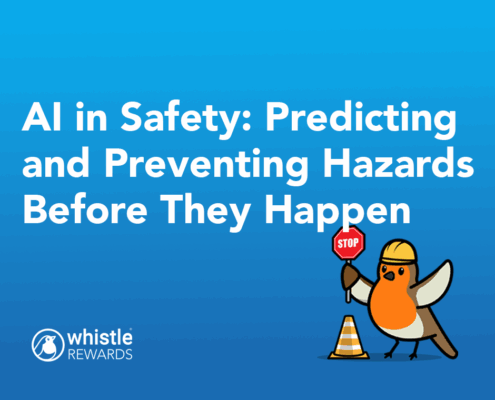 /wp-content/uploads/2025/07/FI-AI-in-construction-July-2025.png 780 940 Chris Dornfeld /wp-content/uploads/2025/12/Whistle_Rewards_w_A_One10_Co-POS_Navy-300x150.png Chris Dornfeld2025-07-15 15:20:192025-07-15 15:20:19AI in Safety: Predicting and Preventing Hazards Before They Happen
/wp-content/uploads/2025/07/FI-AI-in-construction-July-2025.png 780 940 Chris Dornfeld /wp-content/uploads/2025/12/Whistle_Rewards_w_A_One10_Co-POS_Navy-300x150.png Chris Dornfeld2025-07-15 15:20:192025-07-15 15:20:19AI in Safety: Predicting and Preventing Hazards Before They Happen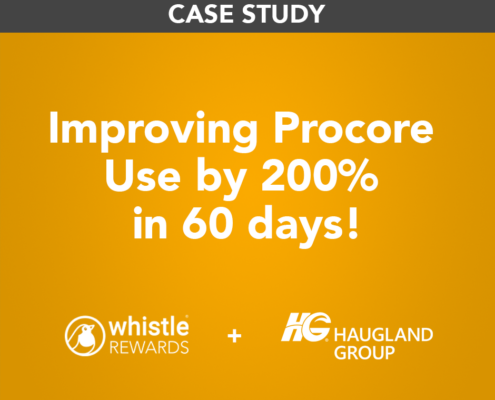 /wp-content/uploads/2025/04/FI-Haugland-Group-Case-Study.png 780 940 Chris Dornfeld /wp-content/uploads/2025/12/Whistle_Rewards_w_A_One10_Co-POS_Navy-300x150.png Chris Dornfeld2025-04-30 20:53:522025-04-30 20:53:52Haugland Improves Procore Use by 200%
/wp-content/uploads/2025/04/FI-Haugland-Group-Case-Study.png 780 940 Chris Dornfeld /wp-content/uploads/2025/12/Whistle_Rewards_w_A_One10_Co-POS_Navy-300x150.png Chris Dornfeld2025-04-30 20:53:522025-04-30 20:53:52Haugland Improves Procore Use by 200%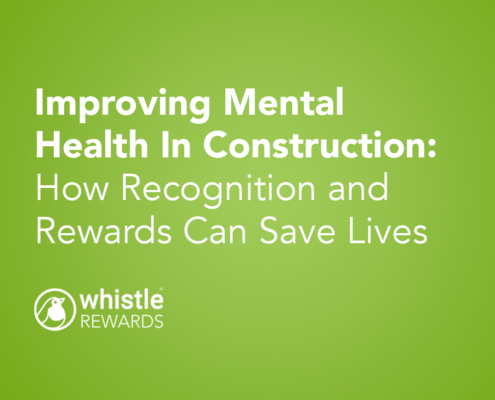
Improving Mental Health in Construction: How Recognition and Rewards Can Save Lives
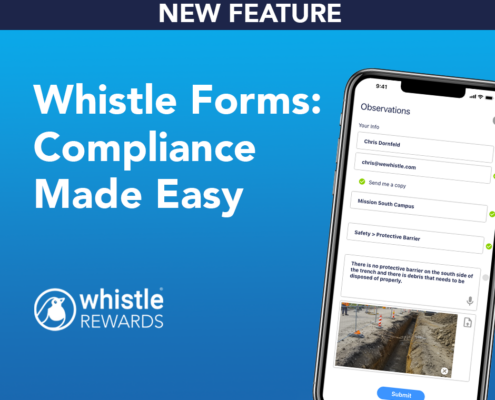 /wp-content/uploads/2025/04/FI-Whistle-Forms.png 780 940 Chris Dornfeld /wp-content/uploads/2025/12/Whistle_Rewards_w_A_One10_Co-POS_Navy-300x150.png Chris Dornfeld2025-04-28 17:58:512025-04-28 17:58:51Whistle Forms: Compliance Made Easy
/wp-content/uploads/2025/04/FI-Whistle-Forms.png 780 940 Chris Dornfeld /wp-content/uploads/2025/12/Whistle_Rewards_w_A_One10_Co-POS_Navy-300x150.png Chris Dornfeld2025-04-28 17:58:512025-04-28 17:58:51Whistle Forms: Compliance Made Easy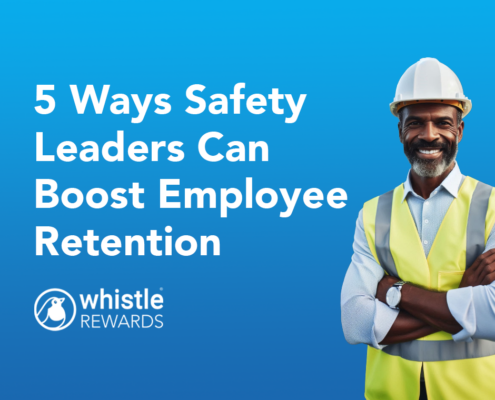
5 Ways Safety Leaders Can Boost Employee Retention
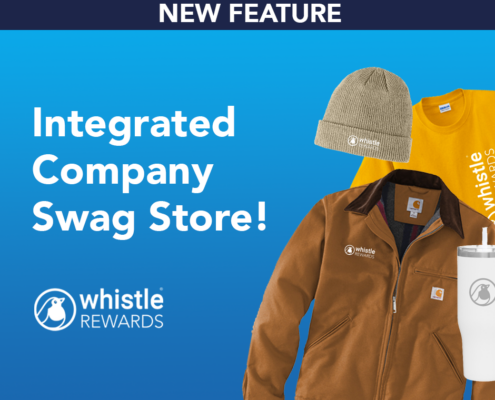
Company Merchandise Stores
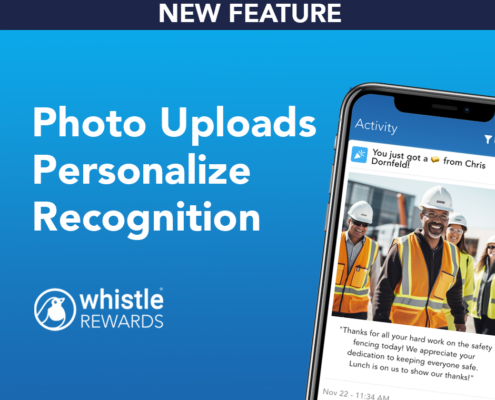 /wp-content/uploads/2025/01/FI-Photo-Uploads-for-Recognition.png 780 940 Chris Dornfeld /wp-content/uploads/2025/12/Whistle_Rewards_w_A_One10_Co-POS_Navy-300x150.png Chris Dornfeld2025-01-12 21:53:032025-03-05 00:33:30Whistle Rewards Launches New Photo Uploads Feature
/wp-content/uploads/2025/01/FI-Photo-Uploads-for-Recognition.png 780 940 Chris Dornfeld /wp-content/uploads/2025/12/Whistle_Rewards_w_A_One10_Co-POS_Navy-300x150.png Chris Dornfeld2025-01-12 21:53:032025-03-05 00:33:30Whistle Rewards Launches New Photo Uploads Feature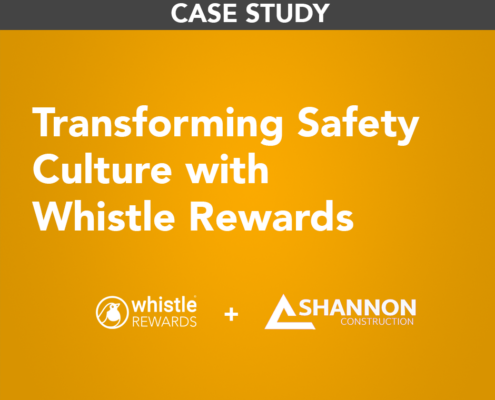
Transforming Safety Culture with Whistle Rewards
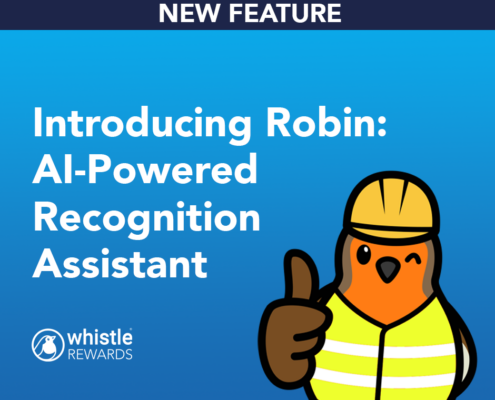 /wp-content/uploads/2024/12/FI-AI-powered-recognition.png 780 940 Chris Dornfeld /wp-content/uploads/2025/12/Whistle_Rewards_w_A_One10_Co-POS_Navy-300x150.png Chris Dornfeld2024-12-12 19:07:322024-12-12 19:40:44Whistle Rewards’ New AI-Powered Recognition Assistant
/wp-content/uploads/2024/12/FI-AI-powered-recognition.png 780 940 Chris Dornfeld /wp-content/uploads/2025/12/Whistle_Rewards_w_A_One10_Co-POS_Navy-300x150.png Chris Dornfeld2024-12-12 19:07:322024-12-12 19:40:44Whistle Rewards’ New AI-Powered Recognition Assistant